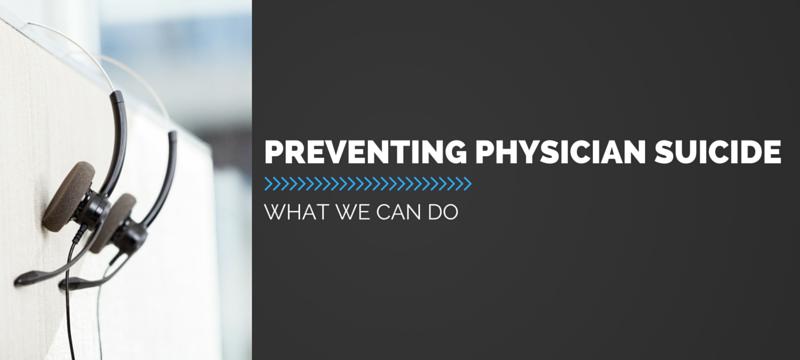Guest blog by Dr. Jorge Del Toro, VP of Clinical Education & Medical Affairs, MEDNAX
In the United States each year, it is estimated that as many as 400 physicians – the equivalent of an entire medical school – are victims of suicide.The statistic is alarming, but not completely surprising when you take a closer look at the issue. Physicians in practice or in training are exposed to a unique combination of workplace stressors – long hours, sleep deprivation, challenging call schedules, growing malpractice concerns and patients that can’t be saved no matter how great the effort. There’s also the reluctance to “out” a peer who may need help and the fear of being “outed,” when mental health issues are often stigmatized even within the medical profession. When you add in the overall difficulty in recognizing signs of mental illness in oneself or in others, the problem is compounded – without diagnosis, there can be no treatment.
The problem doesn’t only impact the physician and his or her immediate family. Undiagnosed and untreated depression in physicians can also pose risks to patient safety and quality of care.
Physicians are often elevated to “superhuman” status by well-meaning patients and the community at large. The pressure to live up to expectations may make physicians feel like they should be able to “muscle through it” without help.
Although the statistics paint a grim picture, collectively, we can change the dialogue.
Here are some things we can do:
Recognize that there’s a problem. Acknowledging that a problem exists is the first step. If we are aware and educated about it, we can begin the tackle it.
Take a proactive approach to your own mental health. Take advantage of online modules developed for physicians by the American Medical Association to enhance professional wellbeing. CME credit is available. Modules include:
Physician wellness: Preventing resident and fellow burnout
Improving physician resiliency
You can sign up to receive alerts when new modules are added.
Watch for signs. Unlike other types of conditions with obvious symptoms, the signs of mental illness, especially in the early stages, may be difficult to spot. The American Psychiatric Association cautions that one or two symptoms below do not necessarily point to mental illness. If a person is experiencing signs that consistently impact day-to-day activities, he or she should seek help:
- Withdrawal (social withdrawal, activities, emotionally)
- Drop in level of functioning (making decisions, “not as sharp”)
- Problems with concentration, memory or logical thought and speech
- Increased sensitivity to sights, sounds, smells or touch
- Apathy
- Feeling disconnected
- Illogical thinking
- Nervousness
- Unusual behavior
- Dramatic sleep or appetite changes
- Mood changes
Get help. If you think you may need help – even if you’re not sure – contact a mental health professional. Your insurance provider can give you information about your coverage (there is usually a number listed on the back of your insurance card). If your company has one, an Employee Assistance Program is also a great resource. For emergency situations, always dial 911.
Encourage peers to seek help. If you witness signs of distress in a peer, you can help remove barriers to seeking help. Engage in a safe, open-ended dialogue, in a caring and supportive way. Encourage him or her to seek help. Reinforce that there are resources available, that we need to take care of ourselves and each other to take great care of our patients.
For additional information, consider the following resources:
National Institute of Mental Health
